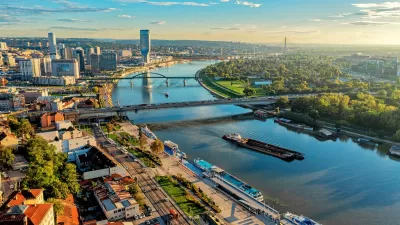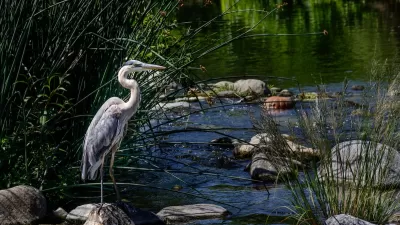When Los Angeles drained Owens Lake to bring water into its quickly growing urban basin, it simultaneously created a dry lakebed and one of the worst dust pollution problems in America. Various efforts to fight the problem have only failed.
In this essay for Places, Karen Piper, a former resident of the area, recounts the many efforts half-started to counteract the dust problem and how those failures have negatively impacted the areas around the lakebed.
"I grew up near Owens Lake, and I breathed in its dust for close to 20 years. I remember that the experience of walking on the lakebed felt like walking on the moon, with its white crusty surface pocked by shadowy craters and peaks of crumbling crystallized salt. Unfortunately, this dust is not the kind that you can simply breathe out. It has been shown to embed itself in the lungs for life, and it is carcinogenic. In 1987 the Environmental Protection Agency declared Owens lakebed to be the worst dust pollution problem in the United States, affecting around 50,000 people. By then the dangers of this kind of fine dust were well known. But it's a complicated story, of course, and to those of us who have followed it - lived it - the decision about whom to help and whom to hurt had already been made, decades ago. In 1906 President Theodore Roosevelt decided that the waters of Owens River should go to Los Angeles because the city was where it would do the "greatest good for the greatest number." "This water is more valuable to the people as a whole," he said, "if used by the city than if used by the people of the Owens Valley." [2] Over the decades the people of the Owens Valley came to understand that the "people as a whole" did not include us.
So when in the late '80s the EPA mandated that the City of Los Angeles fix the problem of the Owens Valley, and do so within ten years, this came as a surprise. But the ensuing events suggest that the kind of engineering ingenuity that had once made it possible to move the waters was unavailable decades later for the equally large-scale job of remediating the damage that had been done."
FULL STORY: Dreams, Dust and Birds: The Trashing of Owens Lake

Planetizen Federal Action Tracker
A weekly monitor of how Trump’s orders and actions are impacting planners and planning in America.

San Francisco's School District Spent $105M To Build Affordable Housing for Teachers — And That's Just the Beginning
SFUSD joins a growing list of school districts using their land holdings to address housing affordability challenges faced by their own employees.

The Tiny, Adorable $7,000 Car Turning Japan Onto EVs
The single seat Mibot charges from a regular plug as quickly as an iPad, and is about half the price of an average EV.

Seattle's Plan for Adopting Driverless Cars
Equity, safety, accessibility and affordability are front of mind as the city prepares for robotaxis and other autonomous vehicles.

As Trump Phases Out FEMA, Is It Time to Flee the Floodplains?
With less federal funding available for disaster relief efforts, the need to relocate at-risk communities is more urgent than ever.

With Protected Lanes, 460% More People Commute by Bike
For those needing more ammo, more data proving what we already knew is here.
Urban Design for Planners 1: Software Tools
This six-course series explores essential urban design concepts using open source software and equips planners with the tools they need to participate fully in the urban design process.
Planning for Universal Design
Learn the tools for implementing Universal Design in planning regulations.
Smith Gee Studio
City of Charlotte
City of Camden Redevelopment Agency
City of Astoria
Transportation Research & Education Center (TREC) at Portland State University
US High Speed Rail Association
City of Camden Redevelopment Agency
Municipality of Princeton (NJ)




























